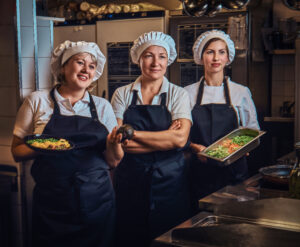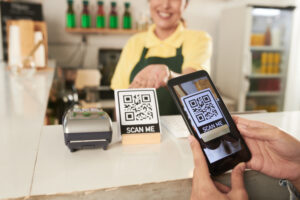What Makes A Restaurant Successful?
The varied demands of this lifestyle have made the evolution of different types of restaurants a possibility today. Different eateries have different target diners and business models, and thus their needs are just as varied. The kinds of eateries include, but are not limited to, fine dining restaurants, quick service restaurants (QSR’s), casual dining, cafes, bars and breweries, cloud kitchens, bakeries, etc. Therefore, the factors involved would be different for different eateries, and one needs to take that into account while strategizing. Running and sustaining a restaurant business is tough. According to a study, 60% of restaurants don’t make it past the first year, while a staggering 80% go under in five years. The first thing that determines the success of a restaurant is knowing its own identity thoroughly. A loyal customer base, quality food, good service, ideal setting are just a few of the factors involved. To keep the restaurant performing consistently, a lot of hard work needs to go into the key factors.
1. The Identity:
It is very important to know the identity of the eatery and be sure of the vision about where it’s going. All eateries operate differently. For example, a fine dining restaurant is very different from a cloud kitchen, and similarly all the strategies and decisions too. Therefore, a well-thought-out restaurant business plan is the first step whose importance absolutely cannot be stressed enough. What does a successful business plan look like? Well, it includes a very thorough knowledge of what kind of eatery one identifies as, along with a good understanding of location, target diners, and a comprehensive understanding of the competition in the market.
2. The Right Team:
No venture can succeed without a good team. The right team that supports your vision has a very direct impact on the success of the venture. To that effect, there are a few things that one must keep in mind when managing their staff.
A safe and happy environment to work in. Communication, compassion, and looking out for employee well-being will ensure that they are going the extra mile of their own volition
Given the high attrition rate of restaurant workers in the industry, a competitive pay package with forms of security and benefits will ensure a loyal staff.
3. The Right Business Plan:
Once the vision is in place and the restaurant identity is well formed, it is extremely important to know how to execute the business plan. A plan that is well-rounded, accounts for emergencies and unplanned events, is financially strategic, and thinks of all the stakeholders involved, is one that is going to make it in the long run. Therefore, one should also keep an eye on the key performance indicators.
4. The Right Indicators:
It is very crucial that one is focused on the right kind of indicators when measuring the success metrics of the restaurant. Data is the driving force behind analytics and a few key factors to focus would be-
Cash Flow: Determining and knowing all the channels of financial transaction of your restaurant business is absolutely critical in its importance among the metrics
Food Cost: It is very important that one knows what is the exact cost of food and beverage items being served to diners. If one is not thorough with their inventory reports, and is not knowledgeable about his variance costs, then it is not possible to have a grasp on the business. Checking the inventory and food cost is a vital key component and leads directly to profitability. A profitable restaurant typically generates a 28%-35% food cost. Coupled with labour costs, these expenses consume 50%-75% of total sales. Because of the impact on restaurant operations, food cost is one of the first things to examine
Prime Cost: Knowing what the costs are for operating the restaurant is one of the founding principles of your business plans. Tracking the Prime Cost on a regular basis is the right way to stay on top of your bottom line. This will also let you optimise labour cost and scheduling, plan food purchasing, and have an in-depth knowledge of how to improve table turn time at your restaurant. It is very beneficial to know how much money you are making compared to the number of available seats during opening hours. When calculating your prime cost ratio, you first find the prime cost by adding your cost of goods sold to your labour costs. Then divide this value by the total sales amount. To calculate, it would look like this:
(Cost of goods sold + Labour costs) / Total sales amount = Prime cost ratio)
The average Prime Cost of a restaurant should have a prime cost between 55% to 60% and should not exceed 65%.
Retention/Repeat Visitor Rate: The most difficult thing about calculating Retention Rate is finding the data. Some experts argue that all other metrics are moot points if the customer experience isn’t up to par. If acquiring a new customer is six to seven times more expensive than keeping an existing customer, this might be the best way to measure the success of the business.
On top of this a regular profit and loss statement generated weekly is beneficial in case of the need for any kind of course correction.
5. The Perfect Technology:
Very important in any restaurant is a platform that includes point of sale, online ordering capabilities, inventory management, staff management, and more. A company that provides high-quality, 24/7 POS support, along with a system that staff can use easily, should be the first criteria when choosing a restaurant management system. Choosing the perfect system is no easy task. Thorough research of the market for the best solution platform and comprehensive knowledge of the current and foreseeable needs of your business is highly recommended. Investing in the right technology is the only way to ensure that there is no falling behind.
6. The Marketing Move:
The perfect restaurant with the best business plan needs the right kind of marketing for visibility and reach. One very important angle of your marketing strategy should include a comprehensive social media angle. Being on different channels gives one the opportunity to interact with customers and attract new ones. With the right kind of offline and online strategy, your restaurant can become the next big thing. Examples of marketing key performance indicators might include:
- Social media traffic growth
- Sales revenue earned from online marketing campaigns
- Online traffic (the number of visitors to the restaurant website)
- Organic online traffic (the number of visitors to the restaurant website via a search engine)
- Click-through rate (the ratio of web traffic that clicks on a particular ad)
7. Incorporating Customer Review:
Customer feedback is the best way to know what is working for your business and what is not. While receiving feedback can be a little hard sometimes, it is here that you start noticing trends and ways you can improve. Be it clients, or diners, be sure to always incorporate feedback in your business plan. According to HubSpot, you’re 60-70% more likely to sell to existing customers than to new ones. A Deloitte survey found the top three elements that created a memorable experience were friendly and authentic service (34%), real-time information (22%), and listening to customer needs (20%).
While creating and operating a profitable restaurant successfully might be tricky, it’s not impossible. An insightful and well-rounded business plan, the right hiring strategy and team management, key metrics and analytics to stay on top of the dynamic industry, etc. are just a few factors. With proper planning and execution, your restaurant will be successfully operating for a long time.








Leave a Reply